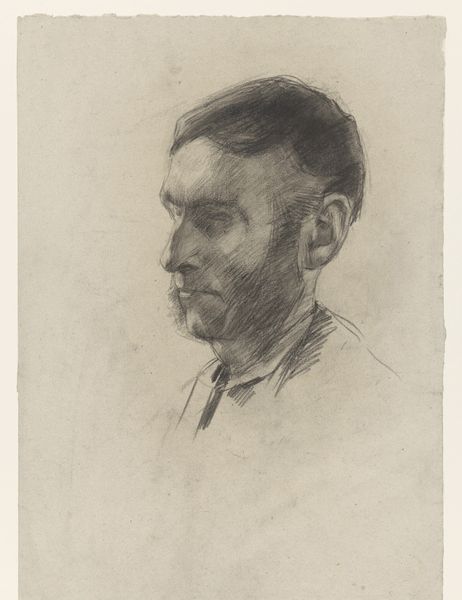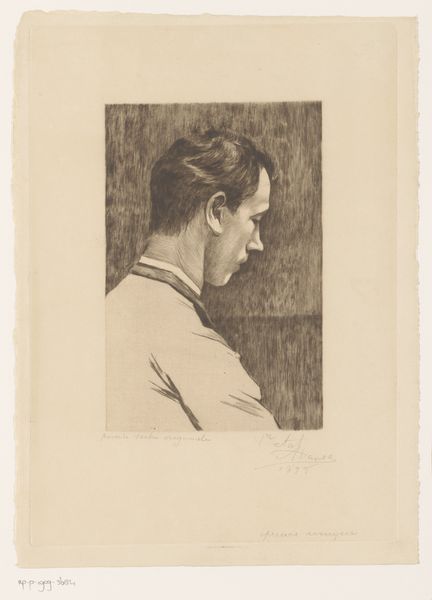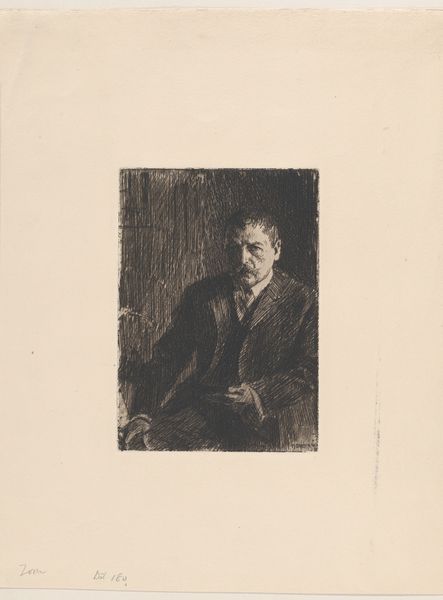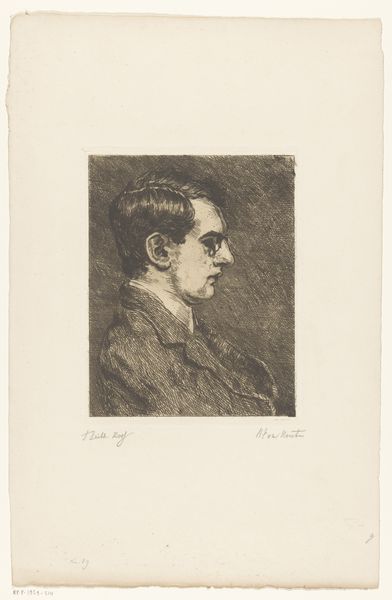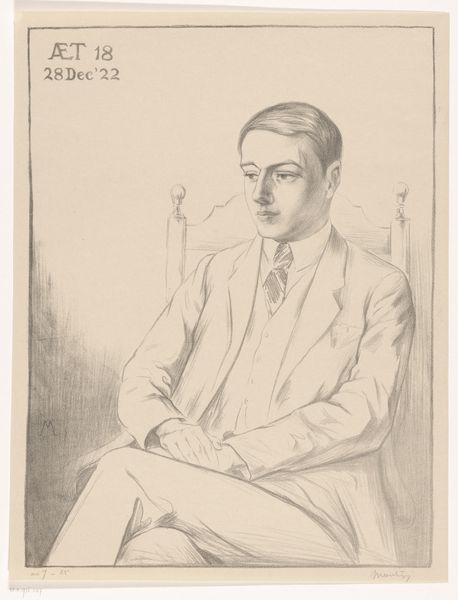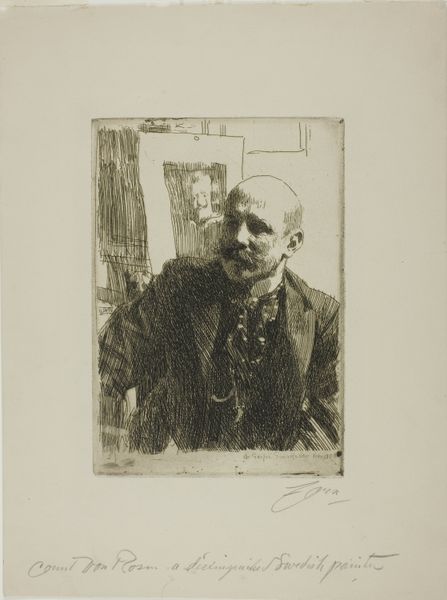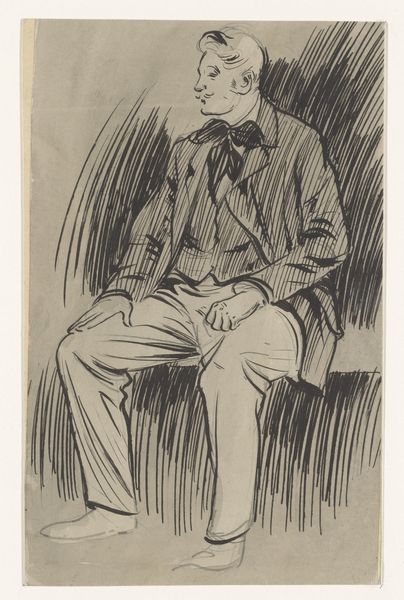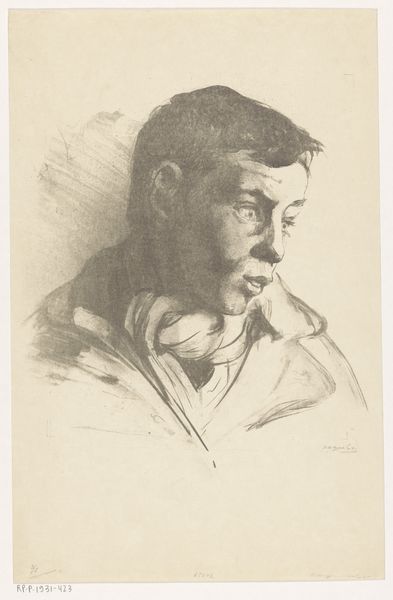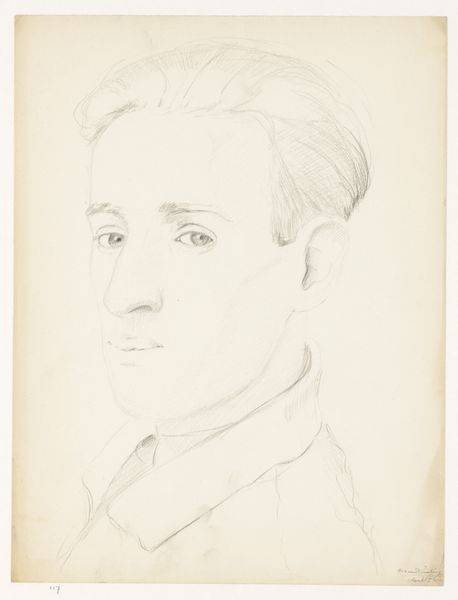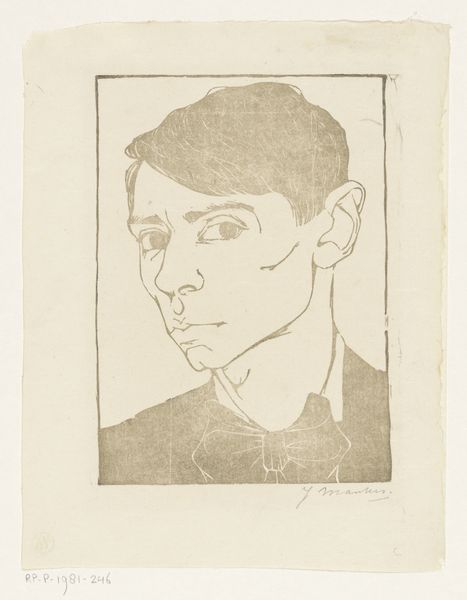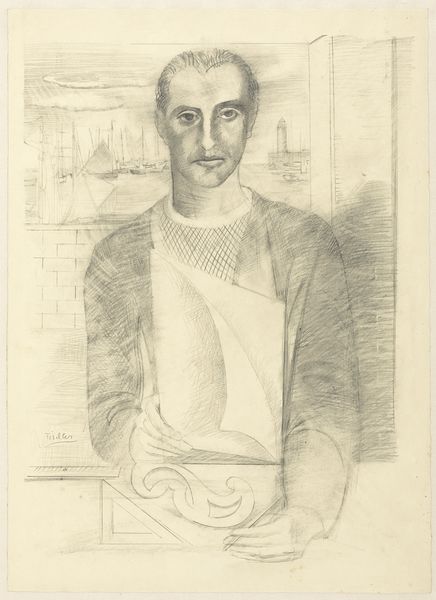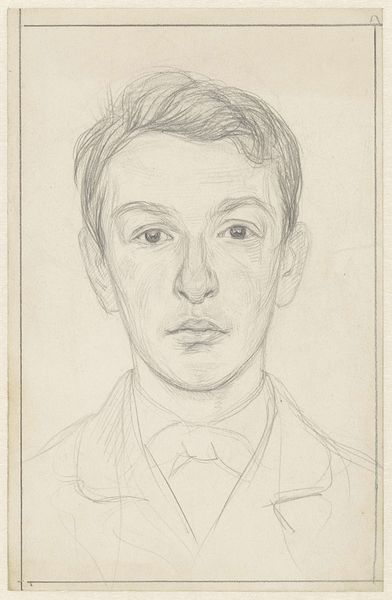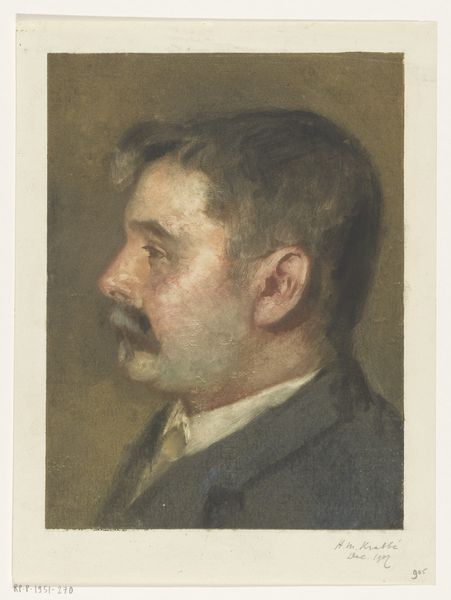
drawing, paper, pastel
#
portrait
#
drawing
#
charcoal drawing
#
paper
#
portrait drawing
#
pastel
#
portrait art
#
modernism
#
realism
Dimensions: height 646 mm, width 484 mm
Copyright: Rijks Museum: Open Domain
Editor: Here we have Heinrich Krabbé’s "Portret van een jongen," which translates to "Portrait of a Boy," dating roughly between 1878 and 1931. It’s rendered with charcoal and pastel on paper and is currently housed at the Rijksmuseum. The somber tones give the portrait a rather melancholic feel, almost like a captured memory. What strikes you most when you look at it? Curator: It's precisely that feeling of a "captured memory" that intrigues me. Krabbé painted this portrait during a period of immense social upheaval, right? Think of the changing societal structures, the questioning of traditional roles. What do you think the choice of depicting a young boy, on the cusp of manhood, might signify within this context? Editor: Maybe it reflects the uncertainty of the future? The boy’s expression isn't exactly joyful, and his gaze seems… distant. Curator: Exactly. Consider the stiff collar, the formal attire. Krabbé subtly highlights the societal expectations placed upon this young boy, while simultaneously capturing a vulnerability. Could it be argued that this portrait critiques the restrictive nature of those expectations? Think about class, gender and performance. Editor: I hadn’t thought about it like that, but I see what you mean. It's not just a portrait of a boy, but also a commentary on the pressures he likely faced. Almost a challenge of identity formation? Curator: Precisely! And by using such muted tones and soft pastels, Krabbé adds to that sense of vulnerability, of fragility, subverting any potential display of masculine power. Perhaps he's prompting us to consider the long-term impacts of such rigid expectations and the subtle but pervasive anxiety felt during the time. Editor: This has definitely changed how I see the portrait. It's no longer just a melancholic image, but a powerful statement about the social climate of the time. Curator: Absolutely. By viewing art through a critical, intersectional lens, we unlock layers of meaning that enrich our understanding not only of the artwork, but of ourselves and our shared history.
Comments
No comments
Be the first to comment and join the conversation on the ultimate creative platform.
